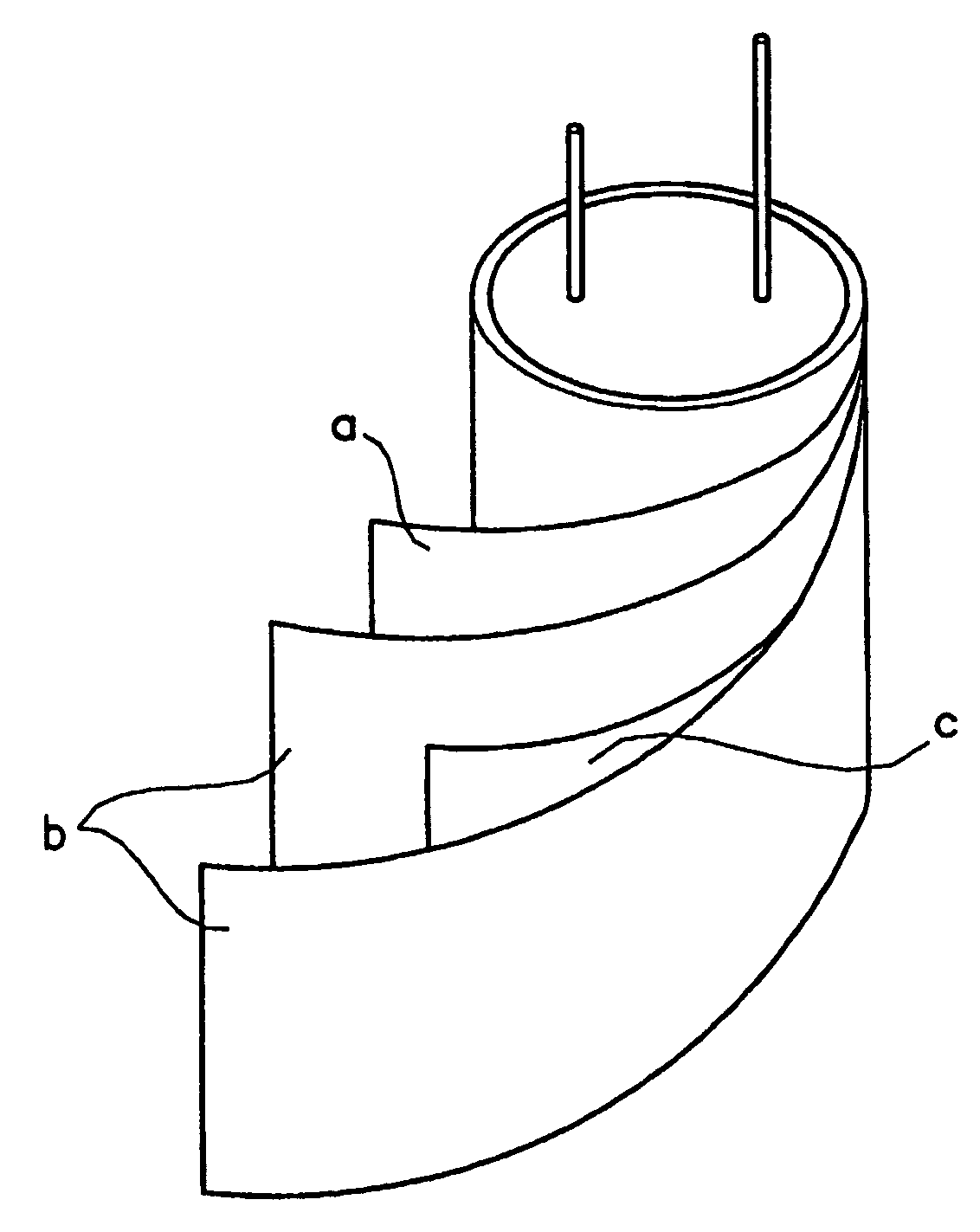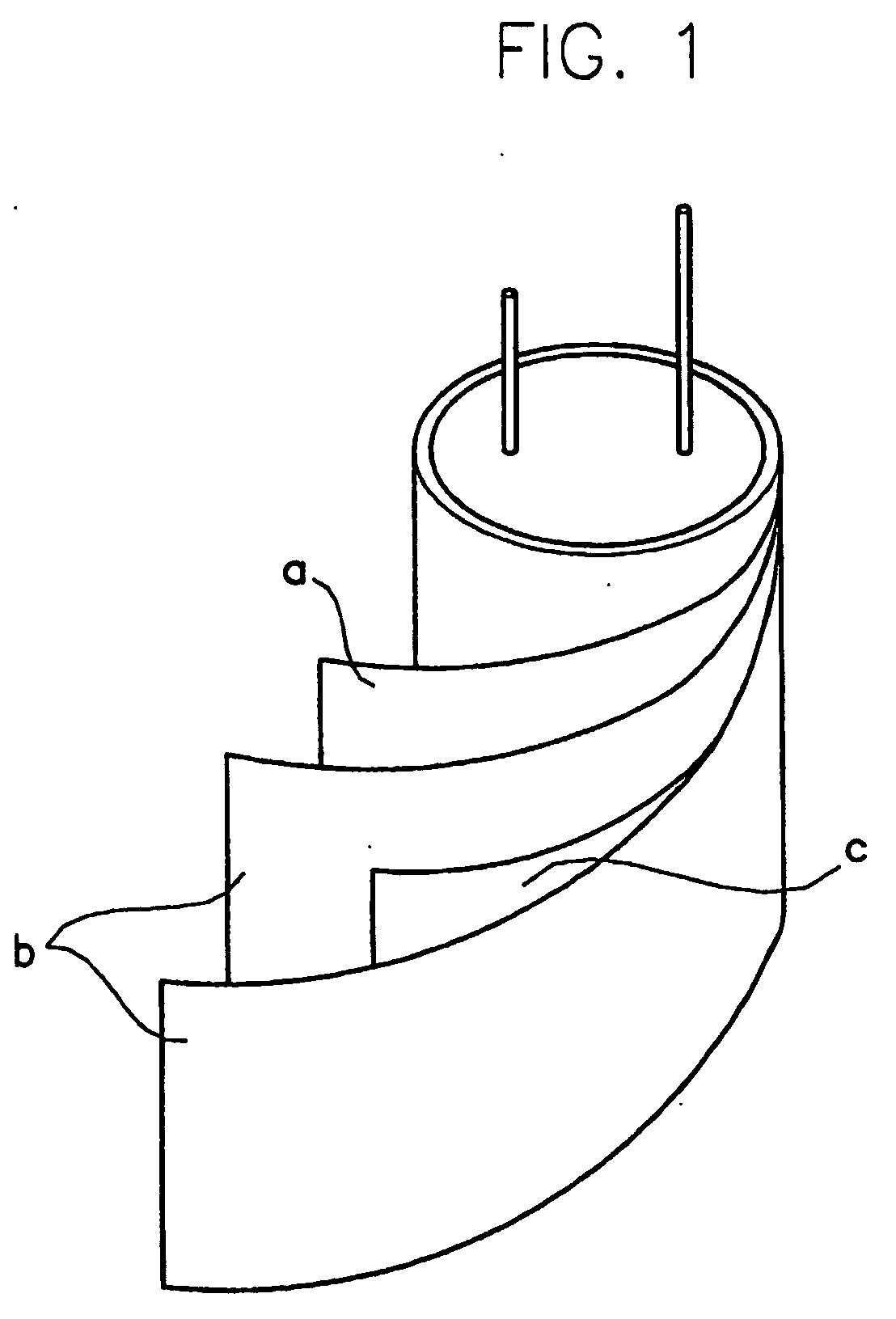Electric energy storage system
a technology of electric energy storage and energy storage system, which is applied in the direction of cell components, final product manufacturing, sustainable manufacturing/processing, etc., can solve the problems of short cycle life of electric energy storage system, inability to quickly charge and discharge, and increase in requirements, so as to achieve fast charging and discharge, short cycle life, and low energy density
- Summary
- Abstract
- Description
- Claims
- Application Information
AI Technical Summary
Benefits of technology
Problems solved by technology
Method used
Image
Examples
example 1
[0059] As an anode active material, LiCoO2 including lithium was used and as an cathode active material, BP (trade name manufactured by Kuraray Co. Ltd., Japan), a kind of activated carbon was used. After the active materials of each electrodes ware mixed with conductive carbon in a ratio of 8 to 2 by weight, water that includes a binder PVdF of 10 wt. % in a dissolved state was added thereto and then they were mixed, so as to prepare slurry. An aluminum foil having a thickness of 20 mm was coated with the resultant slurry, and then the coated aluminum foil was dried in a dryer at a temperature of 120° C., to complete an electrode.
[0060] Thus prepared electrodes were assembled together, by interposing a separating insulation membrane therebetween as shown in FIG. 1. The electrolyte was comprised of acetonitrile as a solvent and LiPF6 of 1.0 M and tetraethylammonium tetrafluoroborate of 1.0 M as a solute. At this time, the surface area of each of the electrodes was 150 cm2 and the a...
experimental example 1
[0061] When voltage of 2.5V was applied to both anode and cathode of the electric energy storage system prepared in Example 1, the respective measured values of the voltage applied to anode and cathode are shown in FIG. 3.
[0062] During the electric potential is applied from 1V to 2.5V, the electric potential applied to the anode was actually changed from 4.1V to 4.8 V vs. Li / Li+ and the electric potential to cathode was changed from 3.08V to 1.69 V vs. Li / Li+.
[0063] As a result, changes in the electric potentials in the present system were almost observed on the cathode. Accordingly, it can be noted that an electrochemical impact when storing an electric energy has occurred on the cathode not the anode. This is the reason why a structurally fragile anode can be protected and the present electric energy storage system has a long life time and rapid charging and discharging characters.
experimental example 2
[0064] The measured CV value of the electric energy storage system prepared in Example 1 by a voltage scan method is shown in FIG. 4. As illustrated in FIG. 4, the measured value of CV is similar to that of an electrochemical capacitor.
PUM
| Property | Measurement | Unit |
|---|---|---|
| specific surface area | aaaaa | aaaaa |
| temperature | aaaaa | aaaaa |
| thickness | aaaaa | aaaaa |
Abstract
Description
Claims
Application Information
 Login to View More
Login to View More - R&D
- Intellectual Property
- Life Sciences
- Materials
- Tech Scout
- Unparalleled Data Quality
- Higher Quality Content
- 60% Fewer Hallucinations
Browse by: Latest US Patents, China's latest patents, Technical Efficacy Thesaurus, Application Domain, Technology Topic, Popular Technical Reports.
© 2025 PatSnap. All rights reserved.Legal|Privacy policy|Modern Slavery Act Transparency Statement|Sitemap|About US| Contact US: help@patsnap.com



